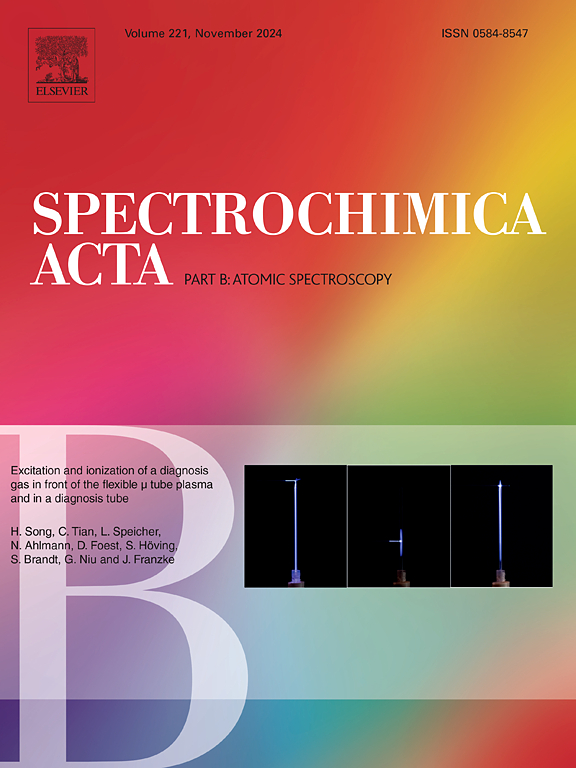Machine learning-based novel approach of image analysis in LIBS elemental mapping for discriminating archeological human bone
IF 3.2
2区 化学
Q1 SPECTROSCOPY
引用次数: 0
Abstract
Recovering individuals from commingled remains is a common issue for bioarcheologists and human paleontologists. Human bones and teeth are the most durable and well-preserved remains in mass graves. They contain major, minor, and trace elements related to dietary habits, diseases, and environment. However, due to postmortem and burial conditions, archaeological bones lose some of their tensile strength and organic constituents and are impacted by diagenesis. Moreover, the elements' distribution and concentration vary within a single bone. This study introduces a novel non-destructive method for characterizing and classifying commingled human bone remains of individuals from different ancient Egyptian dynasties using multi-elemental laser-induced breakdown spectroscopy (LIBS) mapping. The LIBS maps are constructed from fresh spots on the bone surface on a 100 × 300 matrix with 25 μm spatial resolution for elements related to biogenic signals with no influence from postmortem alterations. Then, we address the minimum number of pixel-to-pixel LIBS measurements needed to compensate for the heterogeneous nature of the bone samples by conducting various experiments. A new image analysis methodology is also proposed to capture the statistical information of the LIBS maps. This method combines LIBS maps with a stationary wavelet transform to generate a more informative composite image. Then, a set of spatial and texture-based features are extracted from the LIBS fusion images and fed to different machine learning algorithms like support vector machine (SVM), k-nearest neighbor (kNN) motivated by ensemble learning, and corrective boosting (TotalBoost) to develop the classification models. The results indicate, for the first time, the capability of the LIBS mapping-based image analysis technology to identify individuals from commingled human remains that show promise for the bioarchaeology and forensic osteology domains.

求助全文
约1分钟内获得全文
求助全文
来源期刊
CiteScore
6.10
自引率
12.10%
发文量
173
审稿时长
81 days
期刊介绍:
Spectrochimica Acta Part B: Atomic Spectroscopy, is intended for the rapid publication of both original work and reviews in the following fields:
Atomic Emission (AES), Atomic Absorption (AAS) and Atomic Fluorescence (AFS) spectroscopy;
Mass Spectrometry (MS) for inorganic analysis covering Spark Source (SS-MS), Inductively Coupled Plasma (ICP-MS), Glow Discharge (GD-MS), and Secondary Ion Mass Spectrometry (SIMS).
Laser induced atomic spectroscopy for inorganic analysis, including non-linear optical laser spectroscopy, covering Laser Enhanced Ionization (LEI), Laser Induced Fluorescence (LIF), Resonance Ionization Spectroscopy (RIS) and Resonance Ionization Mass Spectrometry (RIMS); Laser Induced Breakdown Spectroscopy (LIBS); Cavity Ringdown Spectroscopy (CRDS), Laser Ablation Inductively Coupled Plasma Atomic Emission Spectroscopy (LA-ICP-AES) and Laser Ablation Inductively Coupled Plasma Mass Spectrometry (LA-ICP-MS).
X-ray spectrometry, X-ray Optics and Microanalysis, including X-ray fluorescence spectrometry (XRF) and related techniques, in particular Total-reflection X-ray Fluorescence Spectrometry (TXRF), and Synchrotron Radiation-excited Total reflection XRF (SR-TXRF).
Manuscripts dealing with (i) fundamentals, (ii) methodology development, (iii)instrumentation, and (iv) applications, can be submitted for publication.

 求助内容:
求助内容: 应助结果提醒方式:
应助结果提醒方式:


